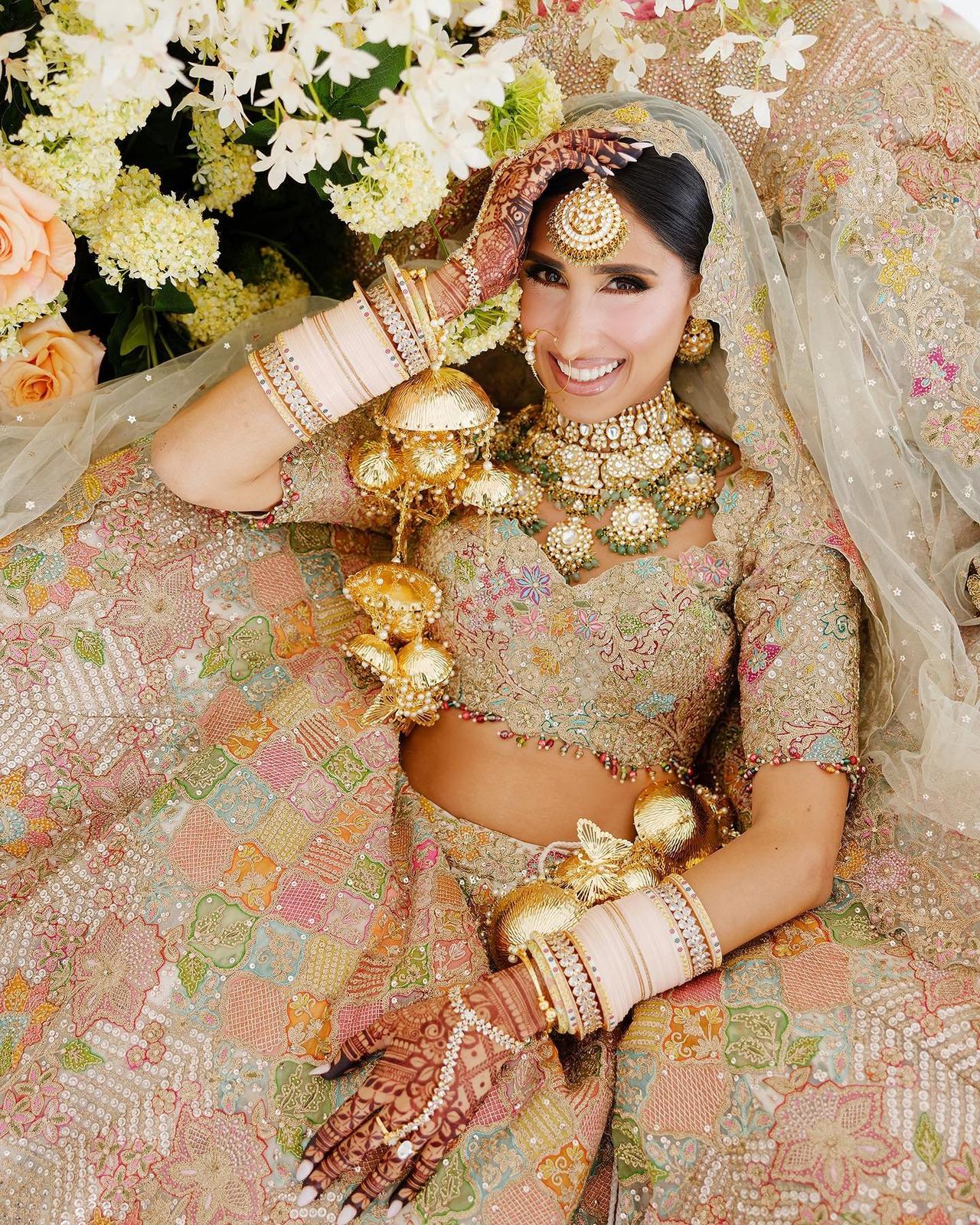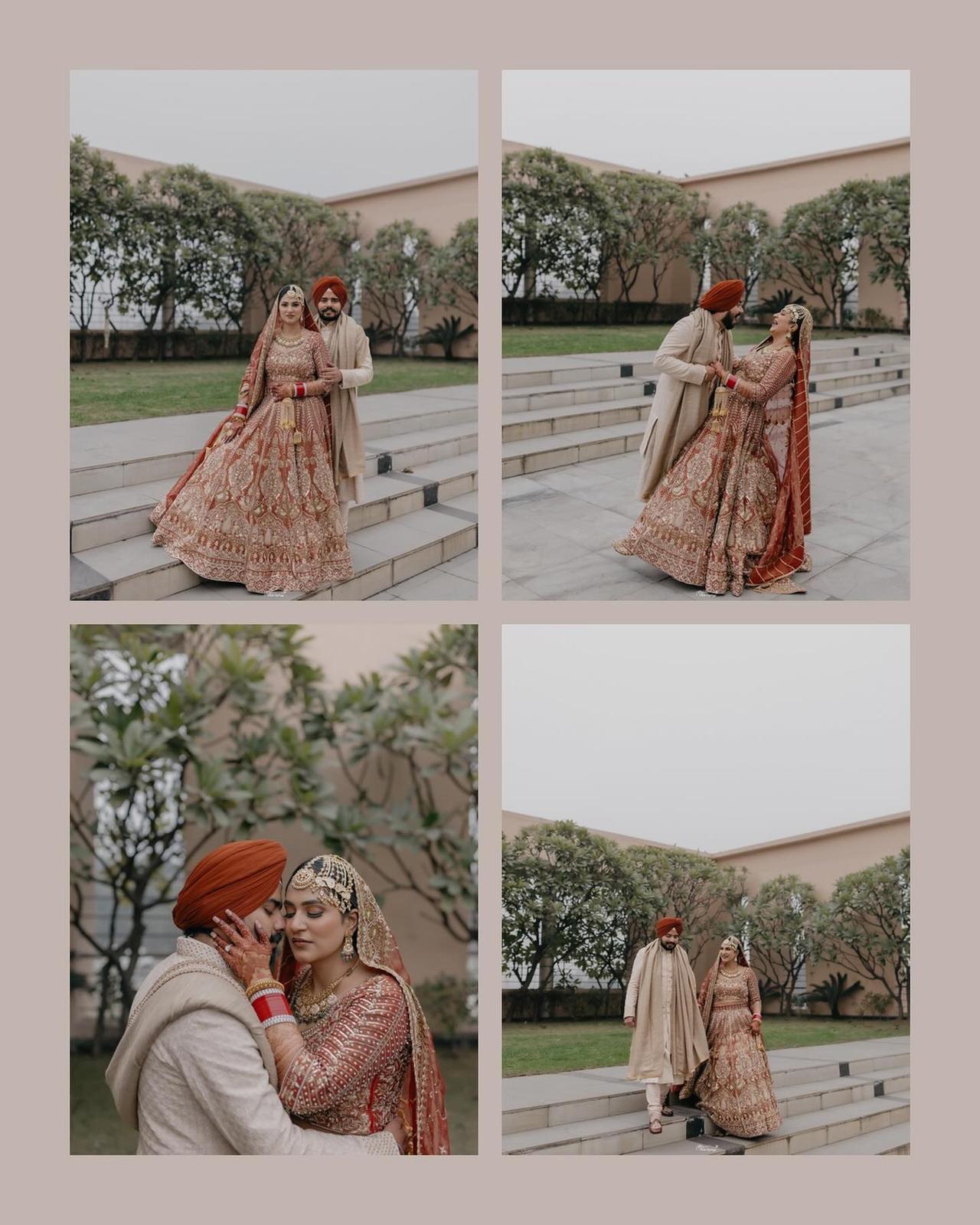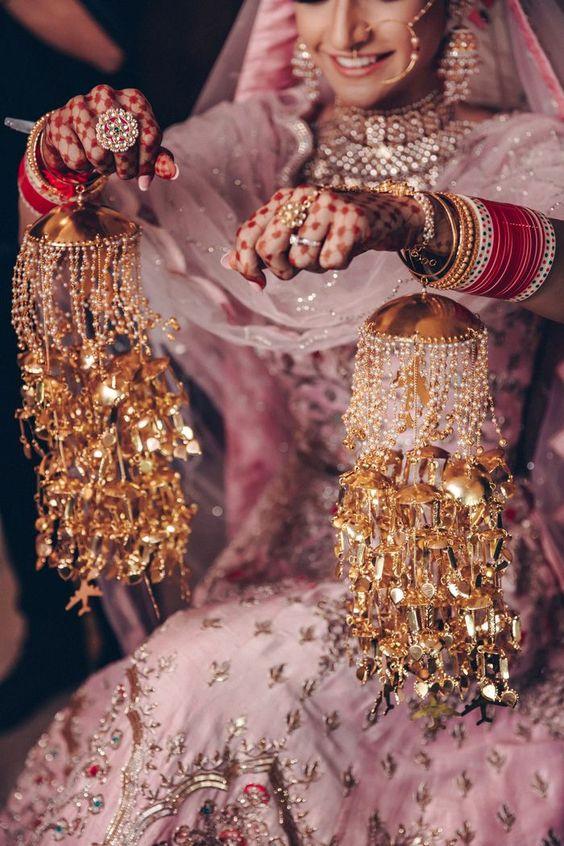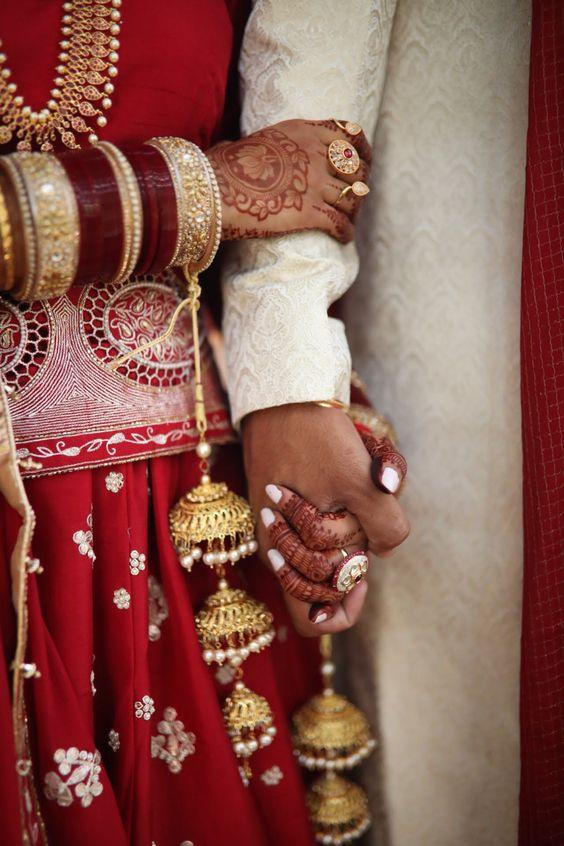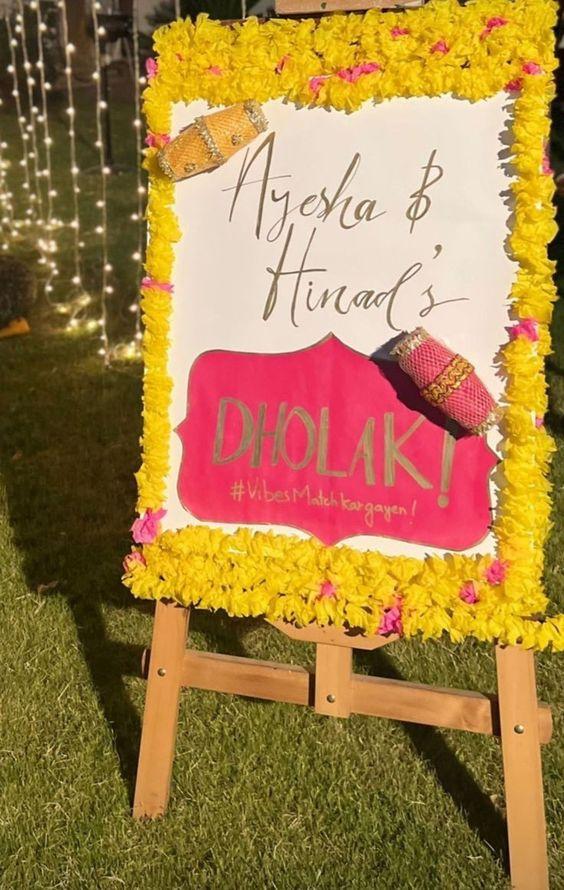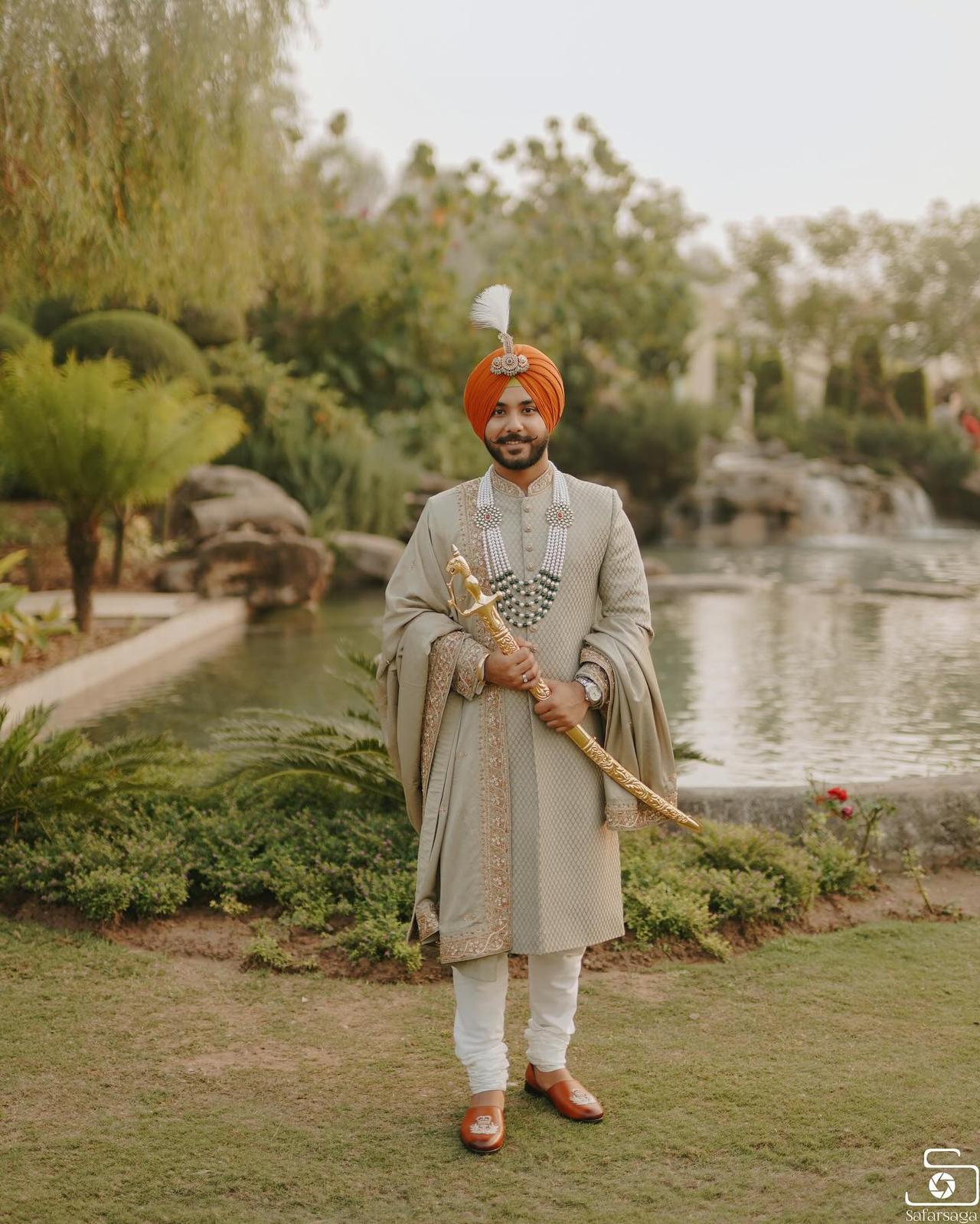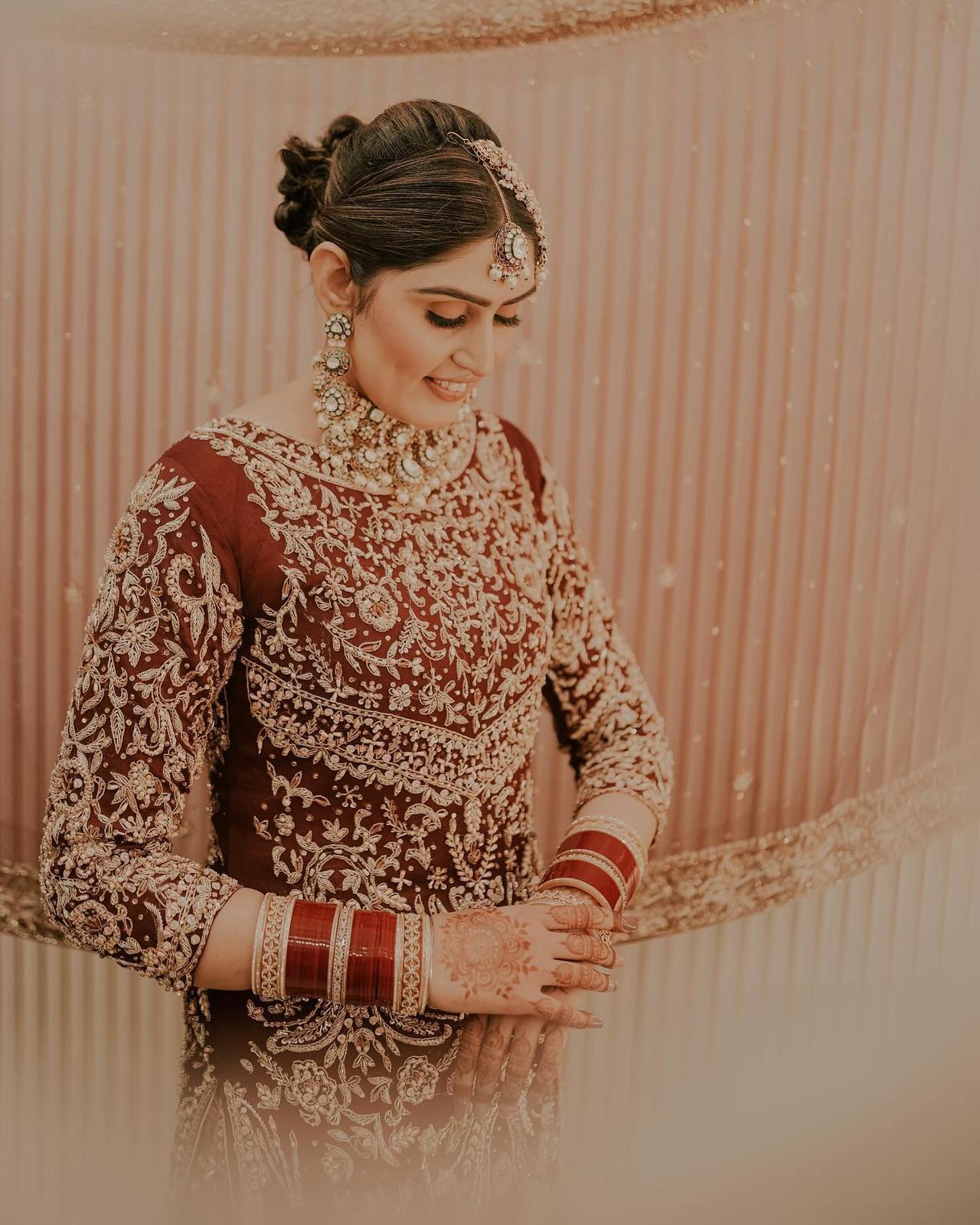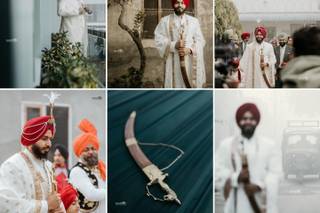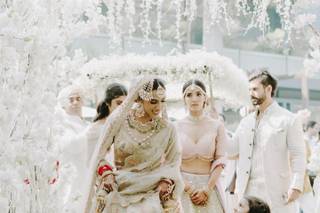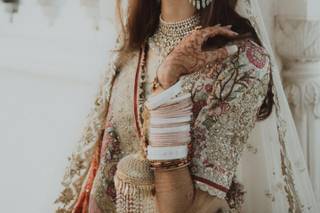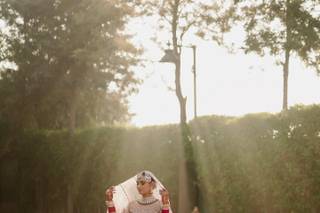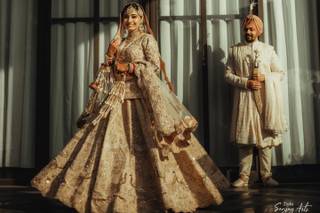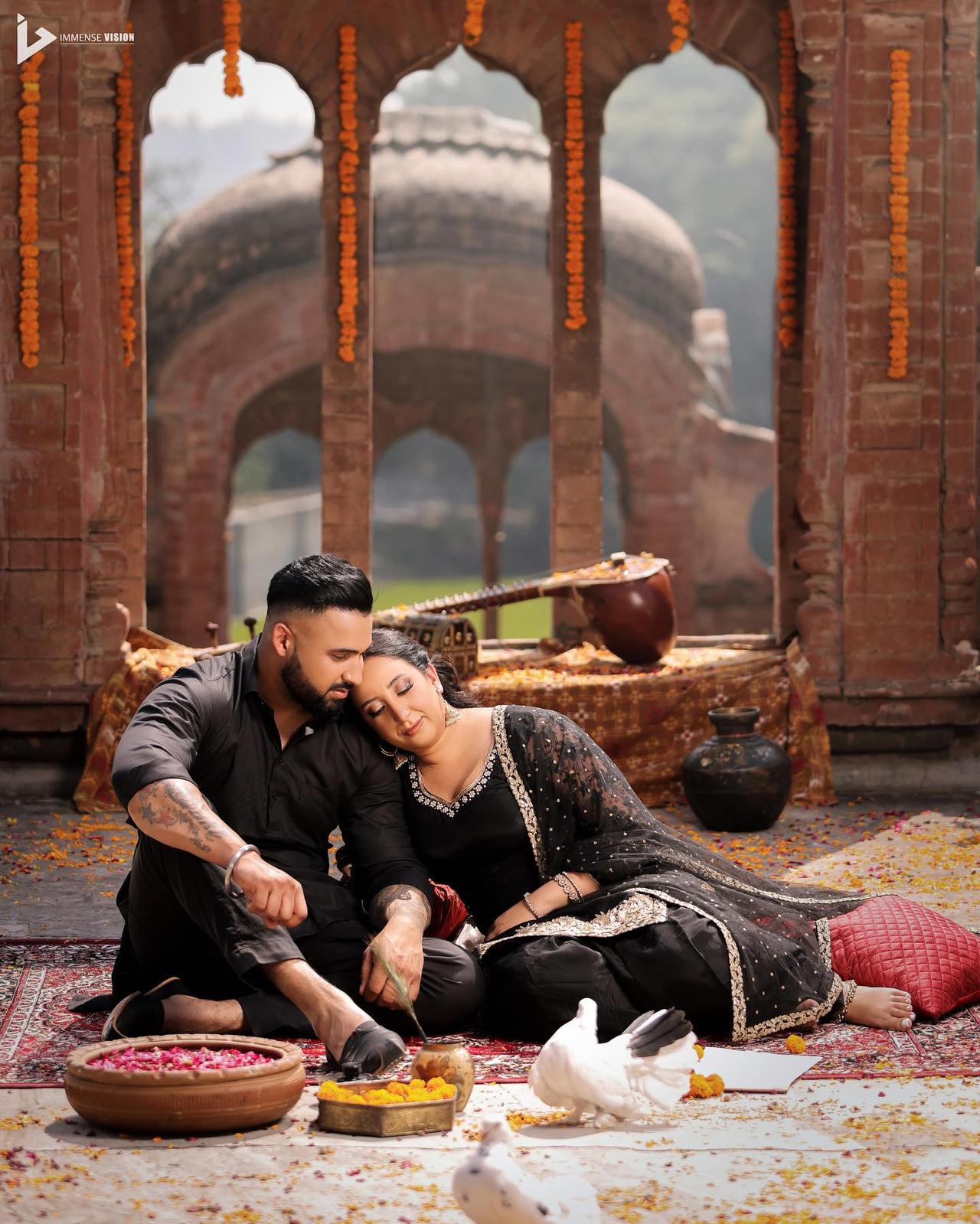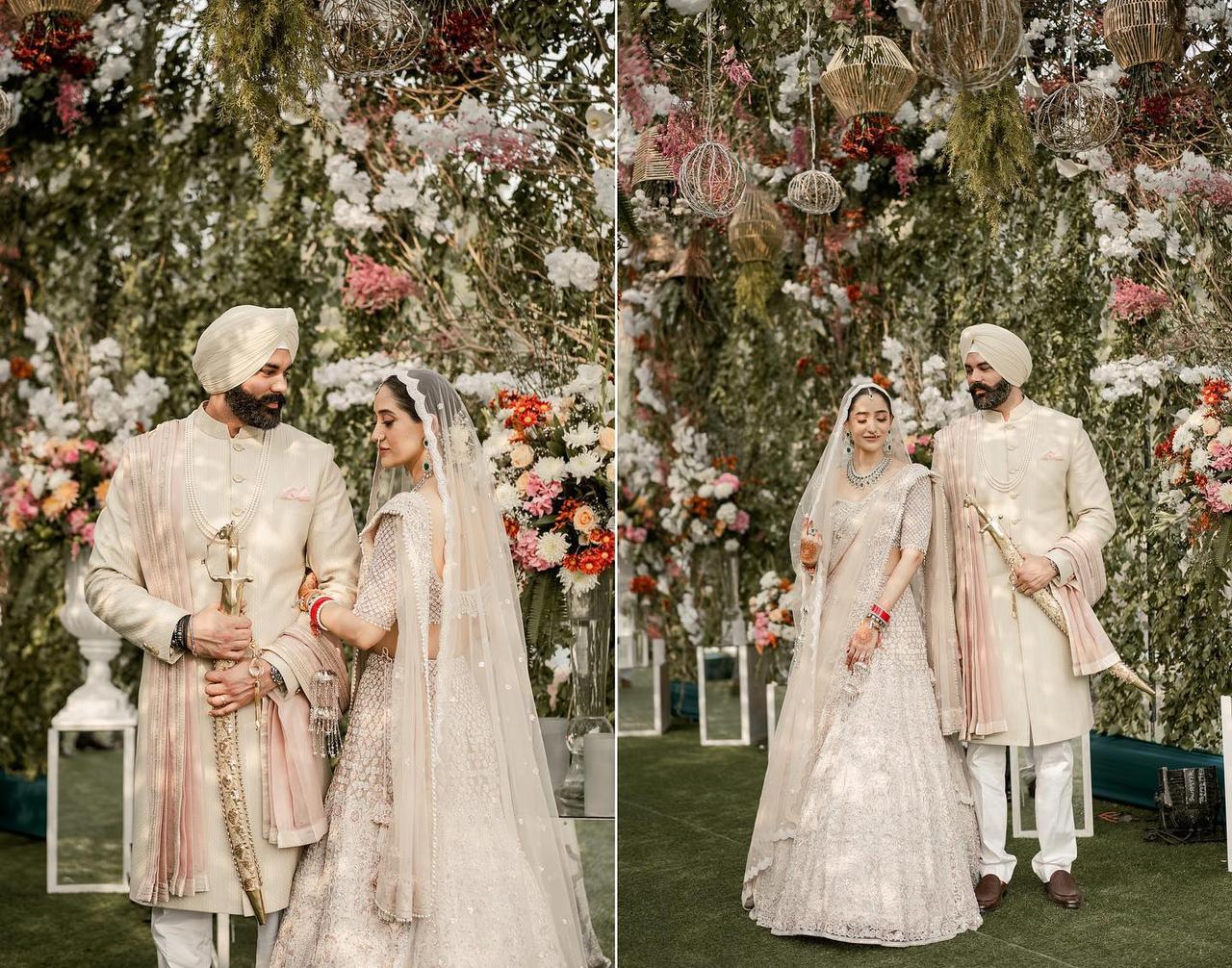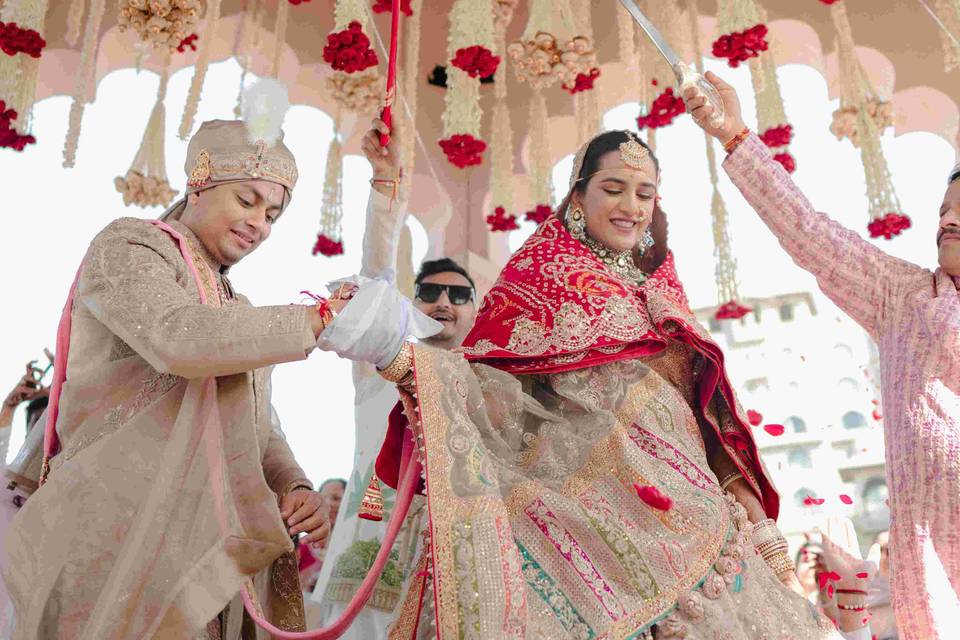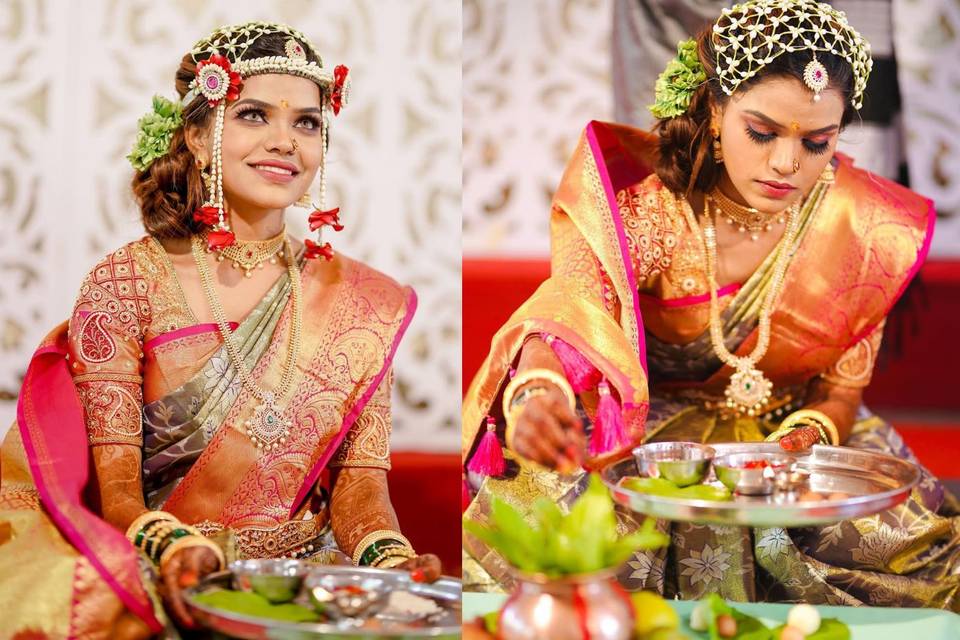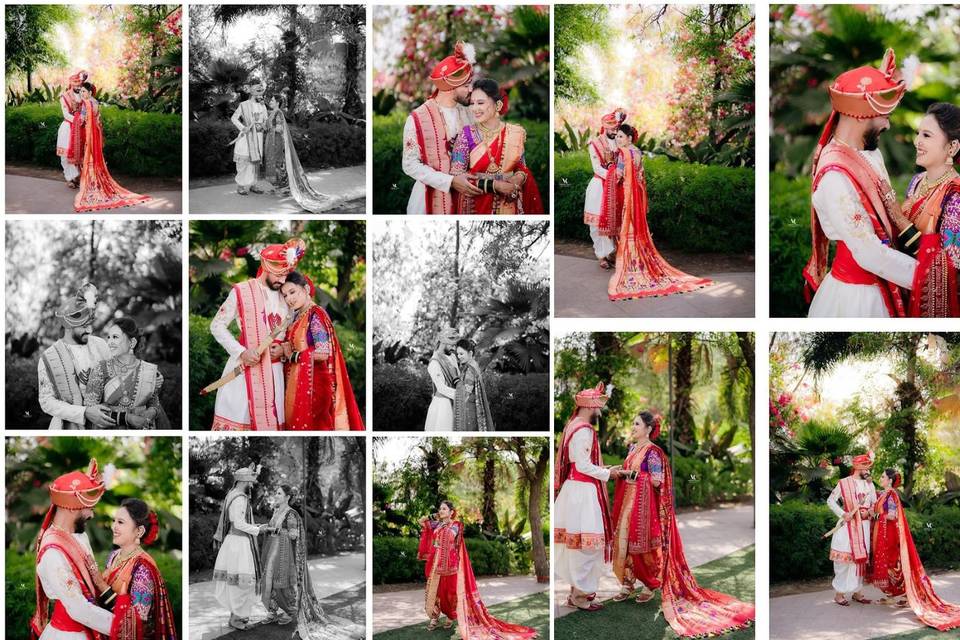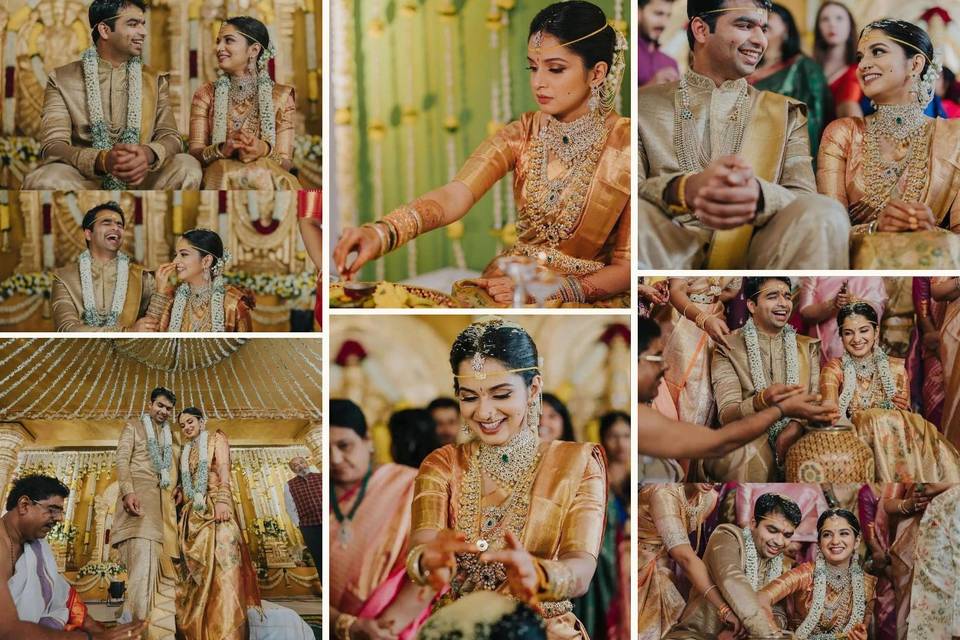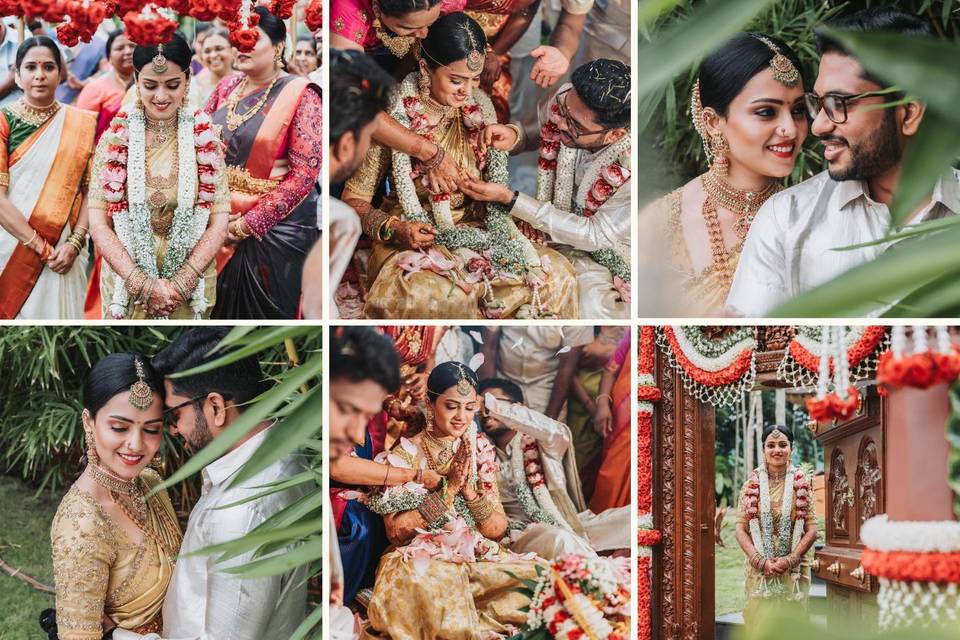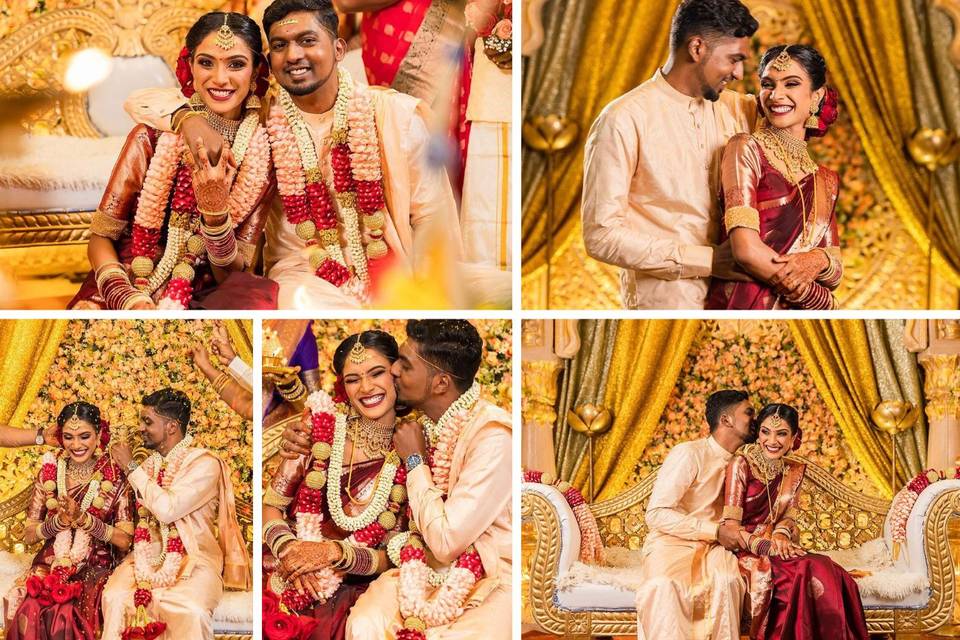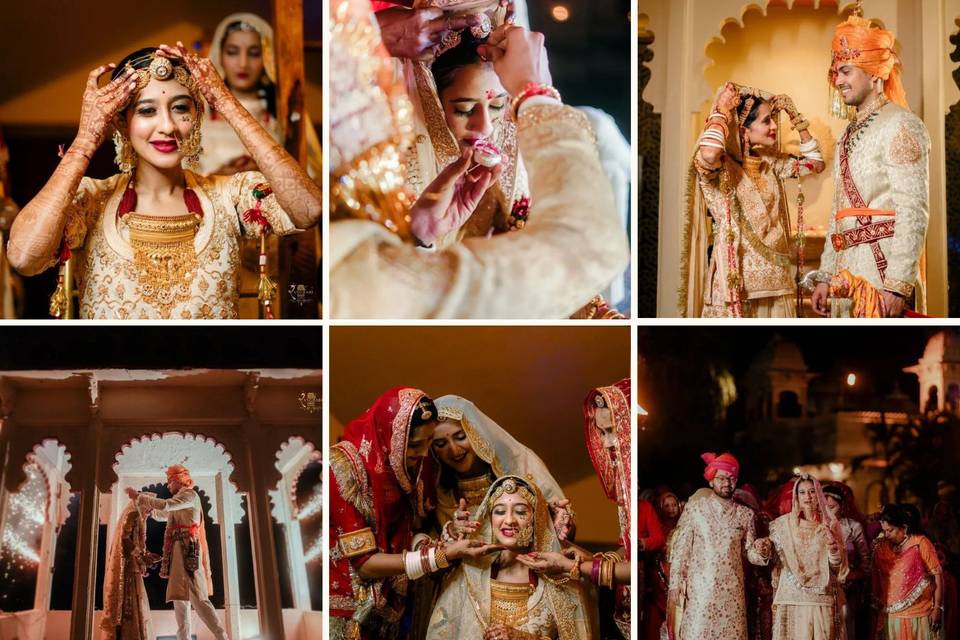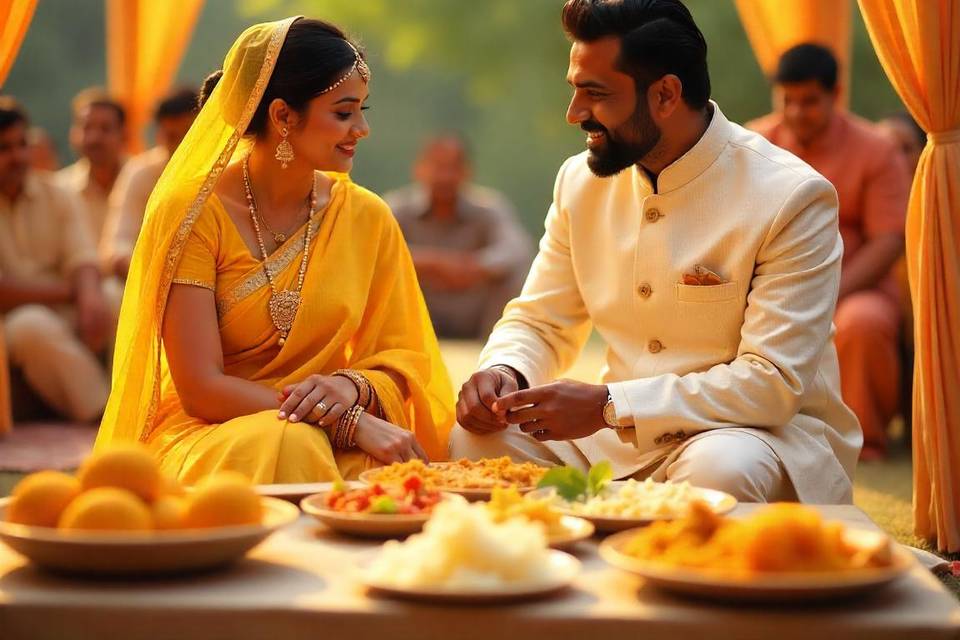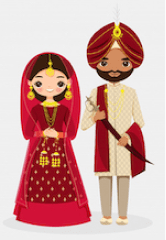Decoding Indian Weddings: Traditions and Rituals of a Hindu Punjabi Wedding
Hindu Punjabi weddings are more than just music, dance, and patiala pegs. From the Roka to the Vidaai, here is the detailed rundown of a Punjabi wedding decoded for you.
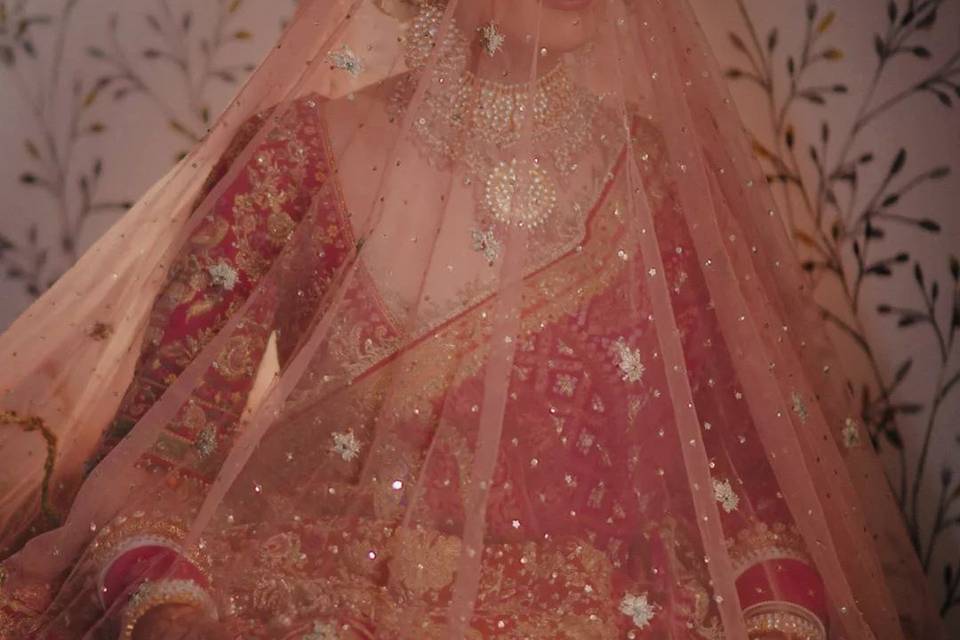

Photography: Amrit Photography
Punjabi weddings are full of colour, love, and delicious food—not to forget Patiala Pegs. We have combined a list of Punjabi wedding traditions and rituals so that you don’t have to ask the bride and groom about what’s going on next time!
In this article:
1.Hindu Punjabi pre-wedding ceremonies
2.Hindu Punjabi pre-wedding rituals at the bride's house
3.Hindu Punjabi pre-wedding rituals at the groom's house
4.Hindu Punjabi wedding day rituals
5.Hindu Punjabi post-wedding rituals
Hindu Punjabi Pre-wedding Ceremonies
Photography: Immense Vision
There is a train of wonderful pre-wedding ceremonies that are celebrated one to two days before the main wedding day.
Roka ceremony
The Roka ceremony is a pre-engagement commitment ceremony where the bride and groom's family officially mark the couple's union. Roka's work has a literal meaning: to stop the bride and groom from seeing any more prospective matches because their wedding is finalised. This ceremony is celebrated with the exchange of gifts and does not usually include the exchange of rings. The millennial couples, however, exchange promise rings or something similar too.
Kurmai ceremony
The Kurmai ceremony, also known as the Sagai, is the engagement ceremony. The bride is gifted with an ornate dupatta, often an heirloom piece belonging to the groom's family. She is showered with gifts, especially jewellery, which her mother-in-law and sister-in-law help her put on. The bride's father puts a tika on the groom's forehead to bless him. The ceremony is sealed with the exchange of rings between the bride and the groom.
Kirtan
The women of both the bride and groom's families get together separately in their respective homes and gather other relatives and sometimes neighbours to perform a puja that marks the beginning of the wedding celebrations.
Dholki ceremony
The Dholki ceremony is the sangeet ceremony. It happens separately at the bride's and groom's houses, respectively. The typical Dholki ceremony is celebrated with the closest family members of the bride and groom's family playing dhols and singing folk songs for Punjabi wedding to tease them. The dhols have, however, been replaced with properly choreographed dance performances and often a DJ too.
Mehndi ceremony
The mehndi ceremony is a major function in which mehndi artists are invited to the bride's house to apply henna to the bride's hands and feet and mehndi to the female family members' palms. The groom, too, wears mehndi as part of this tradition. The bride's mehndi arrives in a gorgeously decorated trousseau that her mother-in-law sent. The Mehndi ceremony often continues to become a cocktail evening, too.
Top Wedding Photographers from Punjab
Hindu Punjabi Pre-wedding Rituals at the Bride's house

Image Credits: Pinterest
Some pre-wedding ceremonies take place separately in the bride's home.
Mayian ceremony
The Mayian ceremony includes the Punjabi wedding Chura ceremony, the Vatna (Haldi) ceremony, the sangeet, and the mehndi. This ceremony typically starts the night before the wedding and is the final preparation ceremony before the big day.
Jaggo
This ceremony is quite literal in its name. The Jaago ceremony is celebrated at the bride's and groom's houses. This ceremony involves the families staying awake all night, singing Punjabi wedding songs, and lighting diyas that the bride's maternal aunt is supposed to carry on her head. A lot of singing and dancing happens all through the night without any sleep to celebrate the wedding day that is to follow.
Vatna
The Vatna ceremony, also commonly known as the Haldi ceremony, involves applying a paste of turmeric and mustard oil to the bride and groom to enhance their glow and prepare them for the wedding.
This ceremony is also celebrated separately at the bride and groom's houses, but with destination weddings becoming the millennial rage, it is often celebrated together now.
Chura & Kalira Ceremony
The bride receives a set of traditional red bangles from her maternal uncle. The bride cannot see the entire ceremony, so her eyes are covered. All the family at this ceremony touch the bangles turn by turn to bless the bride and send their heartfelt wishes for her new life. The maternal uncle and aunt then help the bride put on the churas. The rest of the bride's family then ties the kalire to her churas. This ceremony is celebrated on the morning of the wedding day and marks the beginning of the wedding ceremony.
Ghara Gharoli
The Ghara Gharoli ceremony involves the bride's sister-in-law visiting the nearest temple to fill a beautifully decorated clay pot (Gharoli) with holy water and bring it to the bride. The bride bathes in this water right after her vatna (haldi) and prepares for her wedding. The bride, after that, changes into her wedding attire. Originally, the clay pitcher was filled with water from the well, but with evolving times, it is now done at the nearest temple. The same ceremony occurs at the groom's house, but the groom's sister-in-law gets the water for him to take his ceremonial bath.
Upto 30% off on Vendor Bookings
Hindu Punjabi Pre-wedding Rituals at the Groom's house
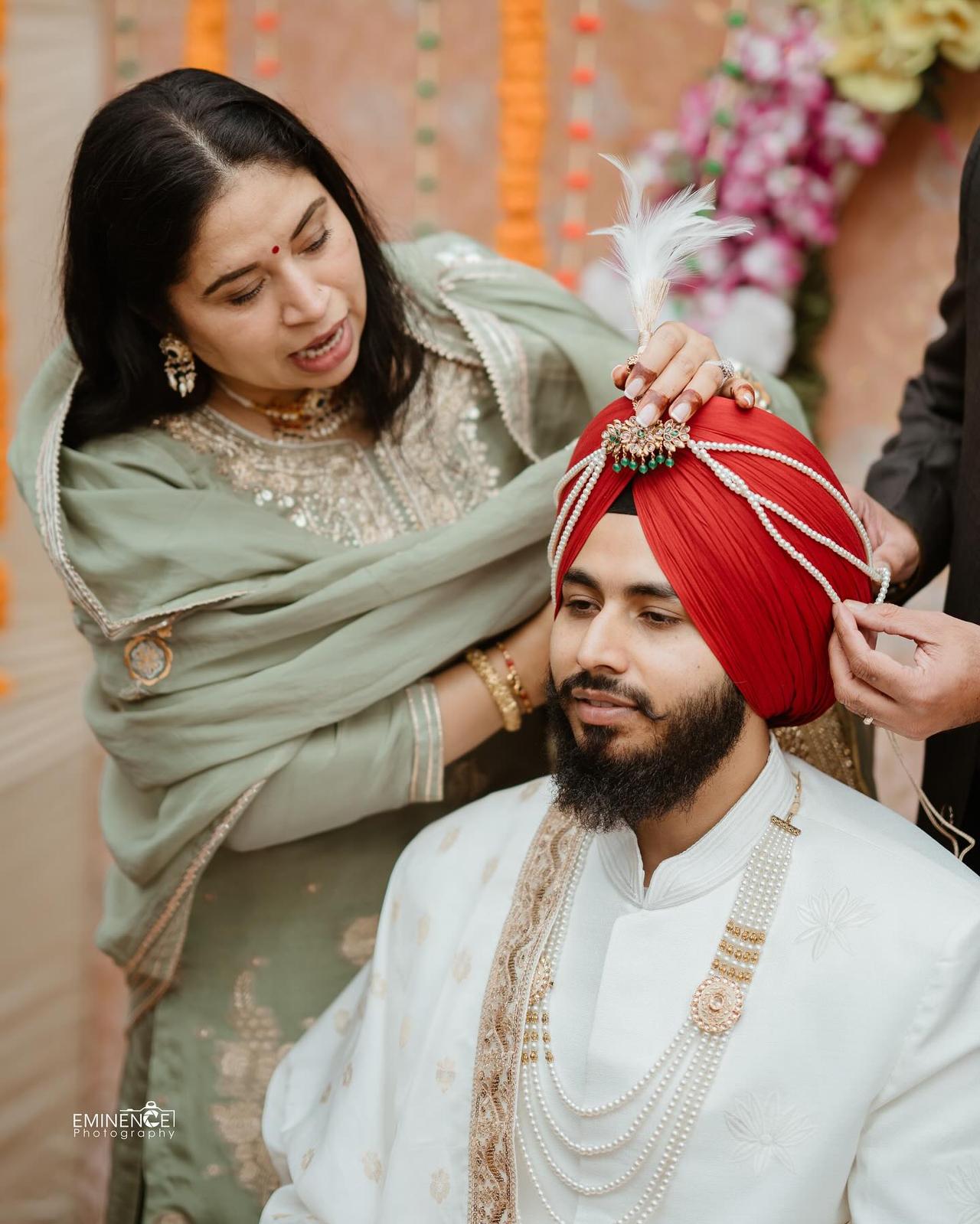
Apart from some of the above-mentioned everyday rituals followed by the bride and the groom, some pre-wedding ceremonies are only observed at the groom's house.
Sarbala
A small kid accompanies the groom and is often the best-dressed kid at the wedding. During this ceremony, a young nephew or cousin, the Sarbala or the groom's caretaker, is picked. He is supposed to accompany the groom and even sit with him in the ghodi, the car that drives them to the wedding with the baraat.
Sehra
When the groom is prepared in his Punjabi wedding dress, his sister performs the Sehrabandi ceremony and ties the Sehra. A small puja is performed to ward off evil, and all the family members who witness this ceremony often shower the groom with gifts as a token of best wishes and luck before he walks down the aisle.
Varna
This is a small yet very significant ceremony that follows the Sehrabandi ceremony, where the groom's sister performs a small puja and puts the Surma on the groom to ward off evil and get him all set to go get his bride.
Ghodi Chadhna
The groom's sisters and cousins feed the Ghodi, or mare, and decorate it with gorgeous Gota Patti fabrics. Family members and close relatives circle some money around the ghodi and the groom as a sign of nazar Utara. Once the groom has mounted the horse, this money is distributed among the poor or less fortunate.
Top Bridal Makeup Artists Near You
Hindu Punjabi Wedding Day Rituals
Photography: Lilac Weddings
The final wedding also comprises big and small traditions that make it beautiful.
Milni ceremony
Image Courtesy: Shiv Weddings
This ceremony is when the groom's baraat reaches the venue, and the bride's family welcomes them at the gate with puja thalis.
Jaimala
In this ceremony, the bride and groom exchange Jaimala or Varmala flower garlands. The families lift them, making it difficult for them to put the garland on each other during this first ceremony of the wedding, which is a lot of fun. The bride is dressed in her Punjabi wedding suit.
Kanyadan
This is one of the most important and sentimental rituals of the wedding. The bride's father puts a ring on the groom's finger, then gives his daughter to the groom. According to Vedic traditions, Kanyadaan is considered the most significant achievement of a father; it’s the most prominent ‘Daan’ he can ever do.
Phere
Following this, the bride and groom perform seven pheras around the sacred fire. Each phera is a significant promise made in the presence of the priest. Following this ritual, the groom applies sindoor (vermillion) to the bride and secures the marriage by placing the mangalsutra around her neck.
Joota Chhupai
During the wedding, when the bride and groom are busy participating in the rituals on the mandap, the sisters of the bride or her cousins and friends indulge in stealing the groom's shoes and hiding them. After the pheras, when the bride and groom need to leave the mandap, a rigorous bargaining session takes place where the groom is asked to pay an amount to the bride's party to get his shoes back. The fee has evolved into cash or money; initially, it was kaleeras of gold for the bride's sisters and silver for her cousins. It is a fun ceremony!
Vidaai
The Vidaai is an emotional tradition that marks the official time for the bride to say goodbye to her maternal home. The bride throws puffed rice or rice over her head to shower the house and her maternal family with gratefulness. Traditionally, the mother-in-law does not come with the baraat for the wedding and chooses to stay back home and prepare for the newlyweds to go home.
Similar to the Grihapravesh, the mother-in-law offers a glass of water and circles it around the bride's head before offering her to drink it. This signifies that the groom's family accepts and welcomes the bride to her new home with love and warmth, and the ceremony is called the paani bharna ceremony. The bride then kicks the brass pot filled with rice with her right leg as she enters the new house.
Top Wedding Photographers Near You
Hindu Punjabi Post-Wedding Rituals

Image Credits: Pinterest
A handful of rituals take place at the groom's house after the wedding, too.
Post-wedding Games
Post-wedding functions start with a lot of traditional games that are played in the groom's house. One of the games is that the ring or the string with cowrie shells and other elements tied to the bride's wrist during the Chura ceremony is put into a bowl of milk or coloured water with rose petals. Whoever finds the rings first is supposed to be the one who steers the married life. There are many other such games, which are excellent icebreakers for the bride in her new home.
Reception
The groom's family hosts the reception ceremony, the official event introducing the new bride to their extended family and social network. This is often a formal celebration involving guests not invited to the wedding. Your Punjabi wedding card can also contain separate information and details for these guests.
Phera Dalna
Once the wedding ends, the bride's brother picks her up and takes her back to her maternal house. She spends the night there, and then her brother drops her back at her Sasural again. This ceremony is a sweet gesture that signifies that the bride is still welcome in her maternal house in the same way as before she was married.
Note: With valuable inputs from Sohaila Kher and Seema Sachdeva.
Now that you have learned about Punjabi wedding traditions and ceremonies, are you excited to attend your next Punjabi wedding? If you are looking for dresses for a Punjabi wedding that fit just right, get in touch with ace designers on board.
Decoding Indian Weddings with WeddingWire India:



